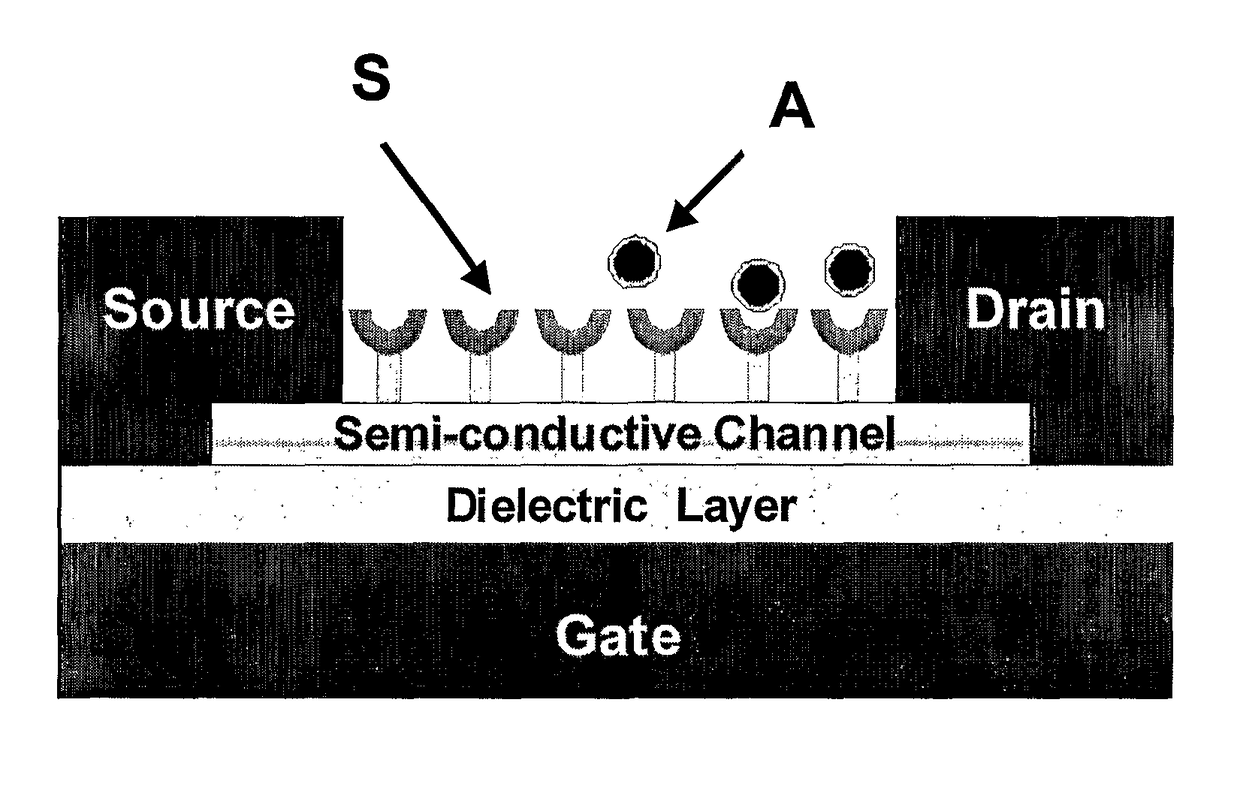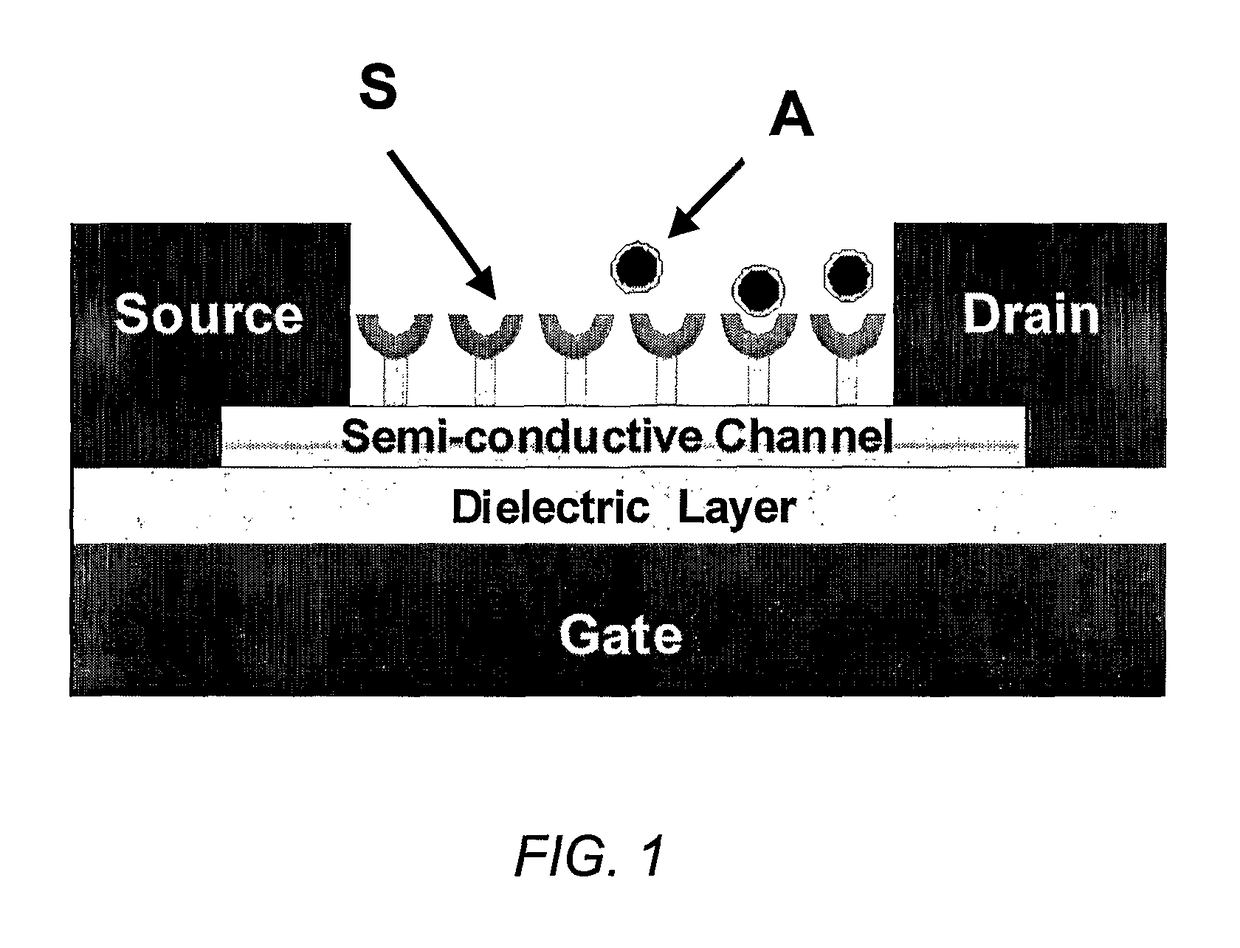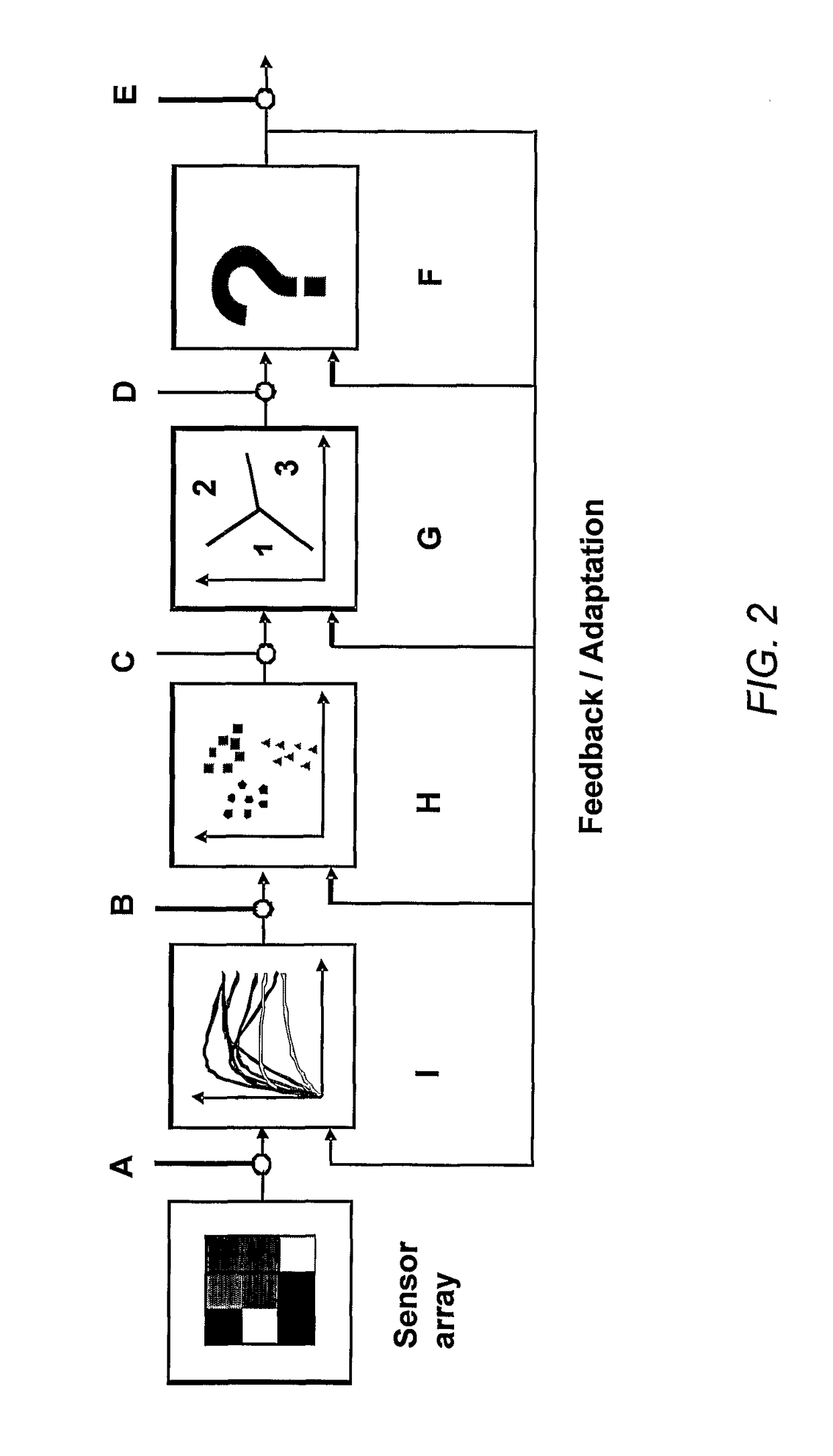Chemically sensitive field effect transistors and uses thereof in electronic nose devices
a field effect transistor and chemically sensitive technology, applied in the field of electronic nose devices, can solve the problems of difficulty in real-time measurement of minute quantities of vocs, degree of expertise required, and need for expensive equipmen
- Summary
- Abstract
- Description
- Claims
- Application Information
AI Technical Summary
Benefits of technology
Problems solved by technology
Method used
Image
Examples
example 1
of the Silicon Nanowires (Si NWs)
[0099]Si NWs were prepared by the vapor-liquid-solid (VLS) growth method using chemical vapor deposition (CVD) with silane on Si(111) substrates. Si substrates were etched in diluted HF to remove the native oxide following by sputtering of a 2 nm thick Au film on the substrate. The sample was transferred into the CVD chamber, and annealed at ˜580° C. with a pressure of ˜5×10−7 mbar for 10 minutes. The temperature was then dropped to ˜520° C. and a mixture of 5-10 sccm Ar and 5 sccm SiH4 was introduced for 20 minutes at a pressure of 0.5-2 mbar to obtained undoped Si NWs. FIG. 3 shows a typical Scanning Electron Micrograph of Si NWs grown from gold (Au) seeds. FIG. 4 shows Transmission Electron Micrograph of the Si NWs in which the majority of the NWs exhibit smooth 50±10 nm diameter Si cores coated with 3-4 nm SiO2, having lengths in the range of 2-4 μm.
[0100]Doped Si NWs were prepared by the vapor-liquid-solid (VLS) growth technique under gas ratios...
example 2
n of Si Nanowires (Si NWs) Through Si—C Bond
[0101]Functionalization of the Si NWs of the present invention was performed using a two-step chlorination / alkylation route. Prior to any chemical treatment, each sample was cleaned using a nitrogen (N2(g)) flow. Hydrogen-terminated Si NWs were then prepared by etching the amorphous SiO2 coating. This was done through exposing the Si NWs to buffered HF solution (pH=5) for 60 seconds followed by exposure to NH4F for 30 seconds. It is noteworthy that longer exposures to HF and / or NH4F results in fluorination of the sample thus interfering with the alkylation process. The sample was then removed and rinsed in water for 2(g) flow for 10 seconds. The sample was transferred into a glove-box with N2(g)-atmosphere for functionalization.
[0102]Functionalization was preformed by immersing the sample into a saturated solution of PCl5 in C6H5Cl (0.65M) that contained a few grains of C6H5OOC6H5 to act as a radical initiator (Hassler and Koell, J. Organo...
example 3
ics of Formation of Functionalized Si NWs
[0103]The coverage of Si NW surfaces with various alkyl chains was plotted as a function of time. FIG. 6 shows a semi-logarithmic plot from which the pseudo-first-order rate constant of the reaction was calculated. Two distinct regions are observed in the curves: at short time intervals an accelerated rate is obtained (corresponds to a Kp1 slope) and at longer time intervals mildly increased rate is obtained (corresponds to a Kp2 slope). Without being bound by any theory or mechanism of action, the increased rate is attributed to the lack of steric hindrance between adjacent alkyl chains. This result is compatible with the kinetics of a pseudo-first-order reaction.
[0104]The kinetics of pseudo first order (ln [n]=−Kp1*t) is detected for up to about 90% of a full coverage of the Si NWs followed by a decrease in rate thereafter. The two main regions in the alkylation process of the NWs are from zero to Γsat, and from Γsat to longer alkylation ti...
PUM
| Property | Measurement | Unit |
|---|---|---|
| gate voltage swing | aaaaa | aaaaa |
| thicknesses | aaaaa | aaaaa |
| diameter | aaaaa | aaaaa |
Abstract
Description
Claims
Application Information
 Login to View More
Login to View More - R&D
- Intellectual Property
- Life Sciences
- Materials
- Tech Scout
- Unparalleled Data Quality
- Higher Quality Content
- 60% Fewer Hallucinations
Browse by: Latest US Patents, China's latest patents, Technical Efficacy Thesaurus, Application Domain, Technology Topic, Popular Technical Reports.
© 2025 PatSnap. All rights reserved.Legal|Privacy policy|Modern Slavery Act Transparency Statement|Sitemap|About US| Contact US: help@patsnap.com



